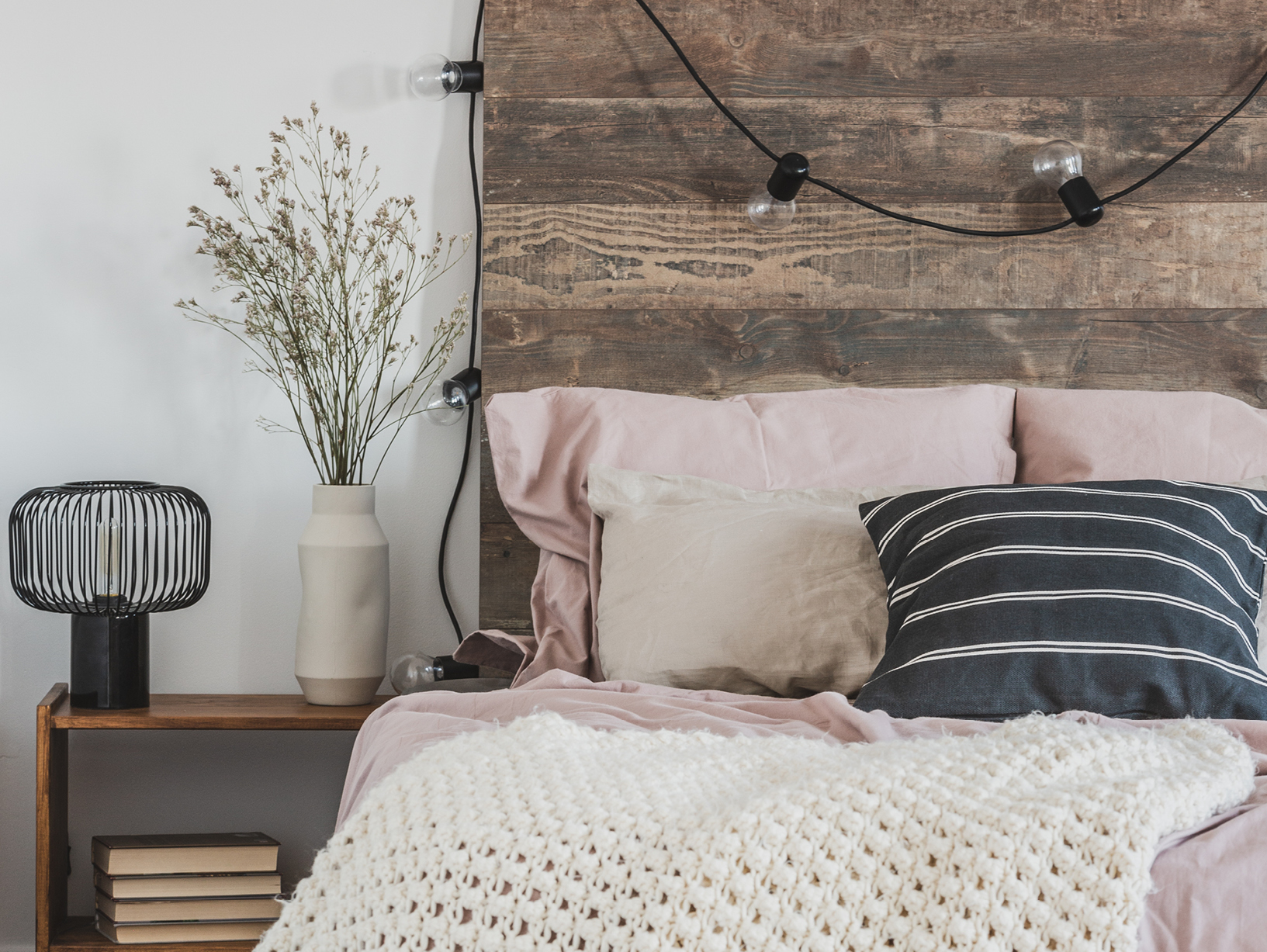Sleep On It
Believe it or not, research estimates that the average American will spend almost half their lifetime in bed. Once you know this startling statistic, it’s hard to not take a closer look at the environment you’re sleeping (or lounging) in. You may reevaluate the lighting in your room, invest in cozier accessories, or, most likely, reconsider whether your current mattress is right for you. With daylight saving time right around the corner, now is the perfect time to assess your sleeping environment.

Mattress Matters
Choosing a mattress is a lot like choosing a paint color—you’re presented with so many options, and it can be an overwhelming decision to make without a lot of guidance. If your sleeping patterns are unstable or you’re waking up with various pains, it may be time to invest in a new mattress. This guide will help answer common questions you may have.
What kind of mattress should I buy?
A latex or memory foam mattress is the best investment because it will last you approximately eight years. A memory foam mattress is the preferred option if you want something that contours to the body. This kind also acts as a pressure reliever, providing optimal comfort. However, for something more cooling, a latex mattress is the way to go. Latex is also a great option for people who prioritize movement and bounce. If you’re on a budget, consider a traditional coil-based support mattress, which can be good if you have back problems.

How do I know if I want firm or soft?
The level of firmness in a mattress can make or break your sleep cycle, but it’s entirely based on your individual preference. The average person prefers a firmness between medium-soft and firm. The right type for you may also depend on your body type, your weight, and your preferred sleeping position.
For example, if you sleep on your stomach, an ideal mattress is one that offers more support to avoid too much curvature of the spine when you sleep. A higher level of firmness would be best.
However, side sleepers should go for something a little lower on the firmness scale. Why? These sleepers go through a lot of rotating and shifting throughout the night, so they need something that will mold to the body. A mattress that’s a higher level of firmness may cause tension in the neck, shoulders, and lower back.
Back sleepers should go for something right in the middle—not too soft and not too firm. A mattress that has too much give won’t support the back enough, while a kind that isn’t soft enough won’t offer the right amount of support.

Will I have to spend more for a quality mattress?
Contrary to popular belief, not necessarily! As a general rule of thumb, plan to spend around $800–$1,000. If you’re buying online, this will put you in the mid-range budget category. If you’re set on buying a mattress in person, just make sure to compare prices online beforehand to avoid unnecessary markups.
A Cozy Oasis
With daylight saving time quickly approaching, it’s time to consider everything about your sleeping situation. Is the lighting too harsh? Has the throw blanket on your bed lost its fluff? There are elements you can add or adjust that will result in an idyllic atmosphere for the months ahead.
Lighting:
If you’re finally tired of the overhead ceiling light ruining the ambience of your room, this is the nudge you need to invest in softer lighting options. Wall sconces—the kind you’d find in a hotel installed on either side of the bed—are great options because they typically come with adjustable arms, are ideal for reading late at night, and are accessible to turn on and off without leaving your bed. A general tip is to offset brighter lighting you’d want during the day with low-light bedside lamps you can switch to at night.

Colors:
Similarly to lighting, avoid jarring colors in your room that can create a chaotic feeling. Bright, saturated colors are fine as accents (think an accent wall, a throw pillow, or artwork), but for an overall look, choose a neutral palette or darker hues.
Accessories:
Consider how many hours a day you spend in your bedroom: between sleeping, relaxing, and maybe even working, that number quickly adds up. Make it a place that truly embodies peace and quiet. When in doubt, add pillows. This gives your bed that plush look that is often sought after for a luxurious and cozy space. Candles will do wonders for adding a sense of warmth to the room (and are a key element of hygge as well). Choose a scent such as lavender, jasmine, bergamot, or vanilla to take the relaxation level up a notch. Lastly, decorate with vintage or antique accessories to give your space that lived-in, refined feel.





